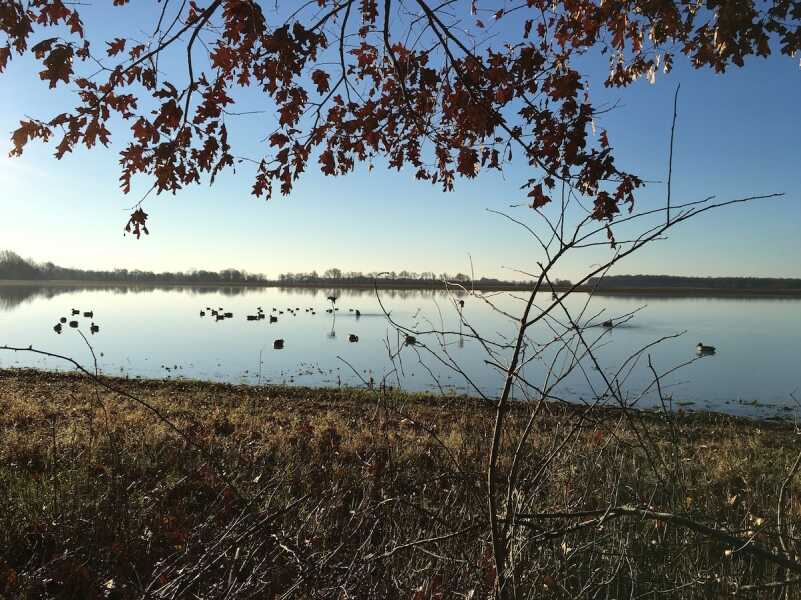
Waterfowling can be a rewarding experience, but it requires some preparation work and knowledge to be successful.
Hunting a new kind of game for the first time can be intimidating. No matter how much you read and research, the most valuable knowledge can only be gained in the field. Growing up in the heart of Dallas presented me with little opportunity to hunt waterfowl. I typically hunt small upland game birds like dove, quail and occasionally pheasant. Having well-trained Vizslas working the birds made hunting easy and enjoyable. Waterfowl hunting on the other hand always seemed like a big mystery to me; that is, until a few weeks ago.
I recently had the rare opportunity to dive head first into the world of waterfowl hunting with some of the most seasoned waterfowl and hunting experts from across the country at a first class hunting lodge, The Mallard Manor. There were guys from Pennsylvania, Illinois, Louisiana, Texas, Montana, Tennessee, Minnesota, California, Wisconsin, North Dakota and Mississippi with a combined 175+ years of waterfowl hunting experience. I had three days to learn everything I could about duck hunting, so here is my takeaway and beginner’s guide to duck hunting from this experience:
Get the Right Gear
Duck hunting is not cheap and is a highly regulated sport. It requires a lot of time and money to get started. First things first, always follow state and federal regulations while hunting any type of game and buy the proper licensing. It is up to you as a responsible hunter to educate yourself on local hunting regulations. If you are duck hunting anywhere in the United States and over the age of 16, you will need a federal duck stamp. The stamp is $25, but nearly all of the proceeds are used to conserve habitats for birds and will grant you free access into any national wildlife refuge that charges an entry fee.
Now that you are legally able to go duck hunting, here’s a basic list of equipment you will need:

the author purchased a pair of Gander Mountain chest waders for the event. Image courtesy Gander Mountain.
Waders: Purchase a set of chest waders with an attached boot. If you are going to be hunting in cold weather (which you probably are because ducks love cold nasty weather), then I’d recommend getting an insulated set of neoprene chest waders. Having an attached boot is essential. If you ever tried walking through a flooded rice field or salt marsh with boots on, then you know how easy it is for the mud monster to steal your nice boots. I purchased 5mm 1,000g boot-foot chest waders from Gander Mountain. They’re relatively comfortable and kept me warm in 27° weather. Note that these will not withstand barbed wire!
Base Layers and Camo: Having a nice set of base layer clothing will keep you warm, dry and comfortable throughout the hunt. I’ve had my experience with the most common brands of hunting gear, but nothing has impressed me more than my recent encounter with Sitka Gear. Their clothing is made with the latest technology, developed by hunters and proven in the field. For waterfowl hunting, their merino wool base layers are a great choice to start out. Merino wool is naturally antimicrobial, which keeps funk away. Top off your base layer with a vest to keep your core warm. For waterproofing and wind protection, a Wading Jacket will keep you dry and comfortable; not to mention Sitka has one of the most badass camo patterns I’ve seen in a long time. You might cry over the price tags, but it’s true you get what you pay for. Those who don’t have a Grizzly Adams beard, consider buying a face mask for extra stealth points.
Decoys: You will need at least a dozen decoys to get started. Several retailers offer decoys in packs of six, ranging from $29.99-$44.99. Get a variety pack if you can, but Mallards are always a solid choice for decoys. You will also need a decoy anchor kit to keep your decoys in position. I recommend “Texas rigging” your decoys as it makes it much easier to set out and pick up the decoys while keeping them organized. If your budget allows, then go ahead and invest in a Mojo or Wonderduck motorized decoy system.
Duck Calls: Buy a good duck call and make sure you know how to use it. Get your grandpa’s old call from the closet, or borrow one from a buddy. You don’t know what you like until you try it. Everyone prefers something a little different. During this trip I was using the new classic Sure Shot Triple Reed. It sounds great and is surprisingly easy to use. Sure Shot calls are all handmade in Texas and produce some of the most natural sounding calls on the market.
Gun and Shells: Each hunter has their preference of guns, but if you’re completely unsure, a 12 gauge with 3-inch shells with #2 or #3 shot will get the job done. Those who like punishment can opt for the 3½-inch magnum rounds. Personally, I use a 12-gauge Benelli SBE with 3-inch shells. You will want a good sling to keep your gun dry and handy. Be sure you are using steel shot when hunting waterfowl. Lead is not permitted anywhere to hunt waterfowl. I’ve used Kent Fasteel, Winchester Blind Side, Federal Black Cloud and Hevi-Shot Hevi-Metal. By far, the Hevi-Shot Hevi-Metal took down the birds with the least amount of effort. It’s nice not having to chase wounded birds across flooded rice fields. Remember that steel shot patterns tighter than lead shot; generally speaking, you will want to use a more open choke than you would with lead. Shooting a modified choke when using steel will pattern more like a full choke shooting lead. The best thing you can do is pattern your shotgun using some different chokes with the shells you’ll be using at distances between 25-45 yds. I prefer a tighter pattern, so I shoot with an improved modified or modified choke.
Optional Gear: Having a blind bag or shell strap/pouch can be convenient, but it’s also one more thing you have to carry into the field. Keep your bag small to limit the amount of extras you can hold. I used a large bag at first but quickly realized I wasn’t using half the stuff I brought and now use a small backpack. Wet wipes are great for everything and you’ll be glad you have them at 4am after three cups of coffee.
Scout the Perfect Spot
There are tons of places to duck hunt. The internet is a great first place to start your scouting adventure. Once you narrowed down your local results, go scout the fields if you can. Look around the area to see what resources are available. Make sure the area has food nearby (if not on the property you are looking at) and has good cover for your blind setup. Ducks have a wide variety in their diet depending on your area. Typically ducks who feed near the surface will eat more aquatic plants and insects, where the diver ducks will eat more crustacean and small fish. It’s always a good idea to have multiple hunting spots. You should not hunt the same area multiple times as the ducks will learn to stay away from the place their friends keep dying. Scouting a new area will take at least a few trips to get familiar with the land and how the birds move across the property, so don’t get discouraged.
Decoy Spread
Setting up decoys is a crucial part of a successful hunt. You will want to make sure and do a wind check to determine the best position for your blind and decoys. In the ideal situation, the wind will be coming from your back so the ducks will land coming right at you. Set out your decoys with a mix of drakes and hens grouped in similar species. A good spread will mimic the letter “J,” with a clear landing zone in the middle for incoming ducks. Place the landing zone right in front of where you want to shoot the birds. Ultimately, you are trying to mimic what a duck would do naturally, so study some pictures of how ducks gather in ponds and land in fields. Basically, think like a duck.
Quacking and Calling
When it comes to calling, everyone will tell you something different. The simplest advice given to me about calling was to act like a duck and learn the basic “quack.” Once you have mastered the quack, you can move onto more advanced feeding or mating calls to lure in those far out ducks. If a duck circles the decoys and appears to be flying away, then go ahead and give it a couple quacks to get their attention. Too much calling could sound unnatural. When a duck quacks once, answer it back with a single quack. Practice is all you can do to get better at calling ducks. I keep my calls in the center console of the truck so I can practice while I’m stuck in traffic. It makes for some interesting looks from those around me.
Know Your Species
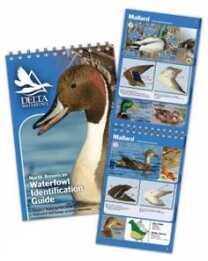
The Delta Waterfowl North American Waterfowl Identification guide is intended to help you ID your targets.
Duck hunting is highly regulated and each species of duck has its own limit. You must know how to correctly identify ducks in the field in order to stay out of trouble. Not all ducks are fair game and you have to know what ducks you are allowed to shoot during the season. The limits can change from year to year, making it necessary for you as a responsible hunter to educate yourself each season on the new limits and regulations. If you have any doubts about the duck you are about to shoot, then don’t. The fines and penalties associated with any hunting violation are hefty and can result in loss of firearms and personal property. An easy way to identify birds in the field is by using the Delta Waterfowl North American Waterfowl Identification Guide, a collaboration effort between the U.S. Fish and Wildlife services and Delta Waterfowl. The guide uses a foolproof method to easily identify geese and duck in North America. It’s also printed on waterproof paper, making it a necessary addition to any waterfowl hunter’s pack. It features high-resolution photos, alias names and geographic locations of the waterfowl in question. This is a great tool for all waterfowl hunters, and at a price of $24.95 it’s a no-brainer. I can guarantee it’s a lot less money than the fine for shooting a duck out of season.
Field Cleaning
Now that you have your limit and posted it to all the social media outlets, you need to field dress the birds. Everyone has their own method, and you will perfect yours with time. The easiest way I found to field dress a duck is to “breast” it out. You start by easily separating the skin from the breast portion of the duck. Once the breast meat is exposed, set the duck on the ground with the breast facing up. Place one foot on its neck, the other on its tail, and avoid stepping on the wings. Insert one finger under the top of the breast and one under the bottom of the breast and pull towards you (don’t worry this isn’t hurting the duck). The breast meat and wings will be removed from the carcass. This leaves the wing intact for proper identification in the event you are stopped by the game warden. Once you get home, clip the wings, filet the breast and be sure to remove any feathers or shot that might be stuck in the meat. Freeze the breasts until ready to be eaten.
Conclusion
Waterfowl hunting can be tough at times, what with the cold temperatures, wet weather and early mornings. It requires a new level of dedication to hunting to be successful. Don’t get me wrong, there was nothing more satisfying than dropping my first Spoonbill while at the Manor during morning sunrise. Being outdoors watching the wildlife come alive, hearing flocks of Snow and Speckled Belly Geese fly over in the thousands is quite a sight—the fact I was able to down a few birds was just an added bonus. And there’s something about hunting that instantly brings people together. It might be the dirty jokes, or just the common interest between hunters, but I can say I walked away from this trip with a great group of new hunting buddies. One of the main things I’ve come away with from these few days of hunting is that waterfowl hunting isn’t just an experience, it’s a lifestyle. Grab some friends and go hunting this season. I am sure you will love it as much as I do.



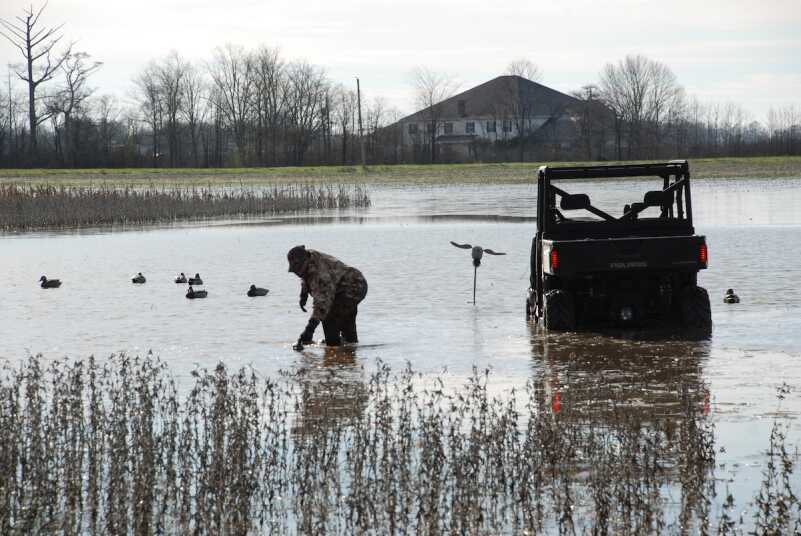
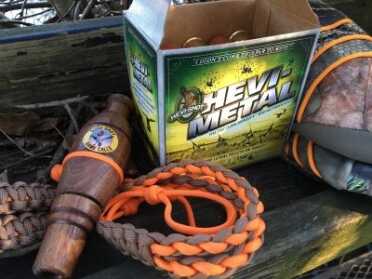
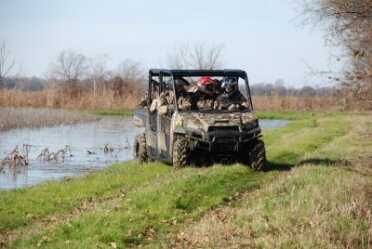

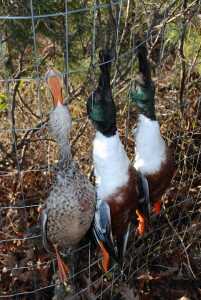
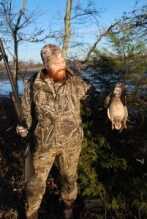
Good article and thanks for sharing. Anyone interested in learning about waterfowl hunting without a dog might find this article helpful. Thanks.https://www.foundryoutdoors.com/blogs/blog/waterfowl-hunting-without-a-dog-4-things-to-consider
Our son is showing a particular interest in the outdoors and my husband is looking for activities to do with him. It is good to know that it is twenty five dollars to get a duck stamp. I am happy to learn that nearly all proceeds are used to conserve habitats for birds. My son and husband already have most of the equipment so after they acquire duck stamps, they should be good to go.